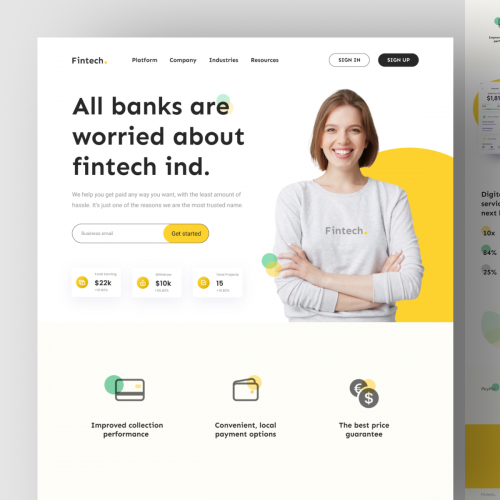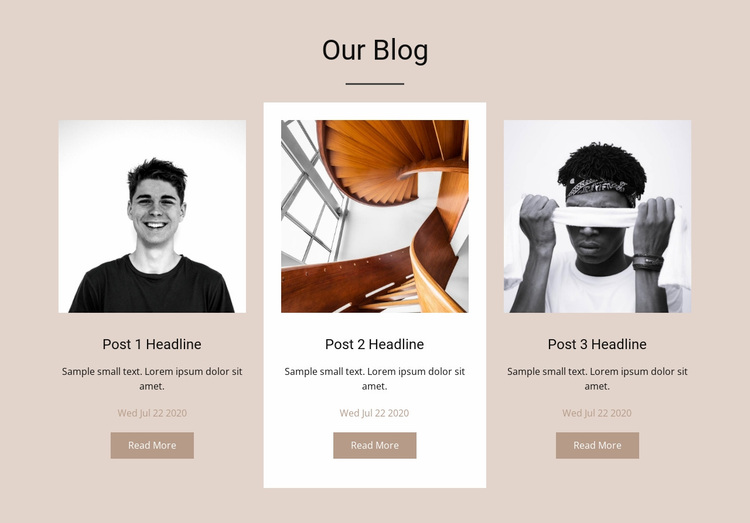Leading Tips for Developing an Impactful Website Design That Converts
To attain this, one need to think about a range of factors, consisting of recognizing the target audience, prioritizing user experience, and optimizing for mobile systems. The tactical usage of compelling call-to-actions and a well-defined visual power structure plays a crucial function in assisting individuals through their trip.

Understand Your Target Market
Comprehending your target market is essential to effective website layout, as it lays the foundation for developing an interesting user experience. Recognizing that your users are, including their demographics, preferences, and actions, allows developers to customize the web site's material, format, and performance to satisfy specific requirements.
Conducting complete marketing research is essential in this procedure. Surveys, meetings, and analytics can supply valuable insights right into user expectations and discomfort points. By assembling this data, developers can develop user personas that represent various sectors of the audience, ensuring that style choices are notified and pertinent.
In addition, comprehending the target market assists in choosing suitable style components such as color plans, typography, and images that reverberate with users. A web site that talks straight to its target market fosters a feeling of connection and depend on, urging longer check outs and higher conversion prices.
Inevitably, a user-centered technique to internet site layout not only boosts individual fulfillment but additionally supports company purposes by driving engagement and loyalty. By focusing on the requirements and preferences of the target audience, a web site can effectively serve its objective and achieve wanted outcomes.
Prioritize Individual Experience
To enhance the general efficiency of a web site, focusing on individual experience (UX) is important (Website Design). A properly designed UX guarantees that site visitors can navigate the site easily, find details quickly, and involve with content meaningfully. This causes increased user complete satisfaction and higher conversion prices
Begin by implementing user-friendly navigation. Menus ought to be realistically structured, enabling individuals to locate key areas of the website with very little effort. Uniformity in layout elements, such as color design and typefaces, cultivates familiarity, which is essential for keeping customer interaction.
Additionally, take into consideration the packing rate of your website. A hold-up of simply a couple of seconds can cause significant drop-offs, as users are much less most likely to await a slow-loading web page. Simplifying photos and enhancing code can enhance efficiency and keep site visitors.
By prioritizing user experience, you not only produce a more delightful setting for site visitors yet additionally strengthen your brand name's credibility. Eventually, a focus on UX is an investment in the lasting success of your website.
Maximize for Mobile Tools
Optimizing for smart phones is crucial in today's electronic landscape, where an increasing variety of users accessibility web sites through mobile phones and tablet computers. A mobile-friendly style not just improves user experience yet also plays a considerable role in enhancing search engine rankings. To accomplish this, it is important to take on a receptive style that automatically adapts to various screen dimensions and orientations.

Packing speed is another critical factor; mobile customers are normally less client and anticipate rapid access to information. Maximize images and take advantage of web browser caching to boost efficiency. Test your site on multiple gadgets and screen resolutions to identify and rectify any kind of potential usability problems. By focusing on mobile optimization, you ensure that your web site continues to be competitive and successfully engages a broader target market.
Use Compelling Call-to-Actions
A website's performance usually hinges on its ability to direct visitors towards preferred activities, making engaging call-to-actions (CTAs) crucial parts of layout. CTAs work as the critical points that direct users to engage with the site, whether that implies making a purchase, enrolling in an e-newsletter, or downloading a resource.
To create reliable CTAs, clarity is critical. Usage concise language that plainly interacts the action you want the user to take. Expressions such as "Get going," "Authorize Up Free," or "Shop Now" not only convey seriousness yet also remove obscurity. The positioning of CTAs is just as essential; they must be strategically placed throughout the web page to guarantee they are conveniently visible, specifically in high-traffic areas.
Additionally, consider utilizing directional cues, such as arrowheads or photos, to guide customers toward these switches. By concentrating on these aspects, companies can considerably improve individual engagement, driving conversions and inevitably attaining their their website website's goals.
Concentrate On Visual Pecking Order
Effective site style depends YOURURL.com greatly on a well-structured visual pecking order that guides individuals through web content flawlessly. By arranging elements in a way that prioritizes information, designers can improve user experience and help with decision-making. This includes using dimension, shade, comparison, and spacing tactically to draw focus to the most important elements of a webpage.
The usage of larger typefaces for headings and subheadings develops a clear difference between various areas, allowing customers to scan content easily. In addition, utilizing different colors for buttons and calls-to-action can record individual interest and encourage interaction. Whitespace is one more crucial component; it avoids mess and allows customers to focus on crucial messages without disturbances.
Pictures and graphics ought to complement the text while likewise sticking to the recognized power structure, reinforcing the overall message (Website Design). Consistency in style components, such as color design and typography, further strengthens the aesthetic hierarchy, making navigation user-friendly

Final Thought
To conclude, efficient internet site design requires a comprehensive understanding of the target market, prioritization of user experience, and mobile optimization. The calculated use of engaging call-to-actions and a distinct visual power structure additionally enhances user interaction. By implementing these principles, web sites can accomplish higher conversion rates, ensuring that design elements not just draw in visitors yet also help with smooth navigation and communication. Inevitably, a well-executed web site design functions as a critical part in driving individual activities and achieving business objectives.